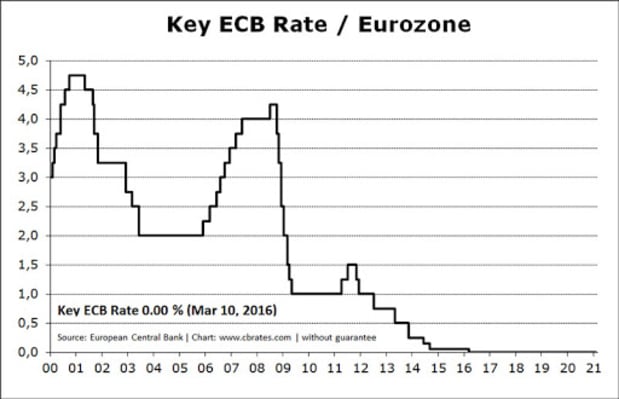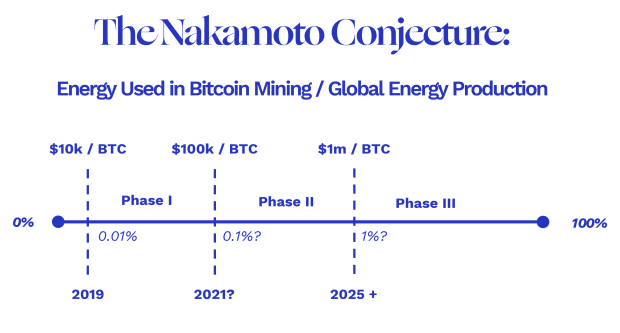Towards A Future Of Energy Abundance
Bitcoin and the Lightning Network are set to revolutionize energy production through their flexibility.
This is an opinion editorial by Austin Mitchell, the co-founder and CEO of Synota.
A Disconnected Industry
Energy is the life-blood of humanity. Modern society is built on cheap, abundant energy. Current economic, political and humanitarian crises demonstrate how energy affects everything we do, how we live and how we envision the future. However, energy prices continue to increase, messages of scarcity proliferate on media outlets and nearly a billion people worldwide live without electricity access. Prosperity requires energy access and equity. We must create an abundant energy future for all.
My career spans the full value chain for gas and electricity in the U.S. When I consume energy in my home — to cook meals, keep warm or mine bitcoin — I know where it comes from and understand how it was priced. When I pay my utility bills the money will flow through multiple companies involved in energy production and distribution. This payment chain settles months after I’ve consumed the energy and the cost of that delay is reflected in the price. This has a negative impact on my wallet, but the cost of this delay also symbolizes a massive inefficiency within the energy industry that distorts the value of energy and stifles innovation.
My interest in understanding the energy industry began as a student at the University of Dayton, when I participated in an applied research project analyzing household energy consumption to assist homeowners with reducing energy costs. I went on to earn a doctoral degree studying the intersection of energy, economics, the environment and policy at Carnegie Mellon, and then led a comprehensive study of methane emissions in the natural gas industry as part of a postdoc with the Environmental Defense Fund.
I have spent the last eight years learning the ins-and-outs of the U.S.energy industry from the perspectives of a producer, utility and retailer. My roles provided a unique opportunity to truly understand the energy value chain. Managing the business side of energy, I witnessed the vast disconnect between the two sides of an energy transaction — physical and financial. Physical energy systems, the molecules and the electrons moving down the value chain to the consumer, are increasingly dynamic and rapidly decentralizing. Energy finance processes, the movement of money up the value chain from the consumer, remain stuck in the days of analog meters and vertically integrated utilities.
For example, the United States has invested billions of dollars since 2009 to roll-out nearly 125 million smart meters. These meters provide real-time consumption data to the supplier, which should enable beneficial pricing and billing options for customers. However, less than 3% of smart meters are being used to provide these and other benefits that utilities promised their customers, according to a September analysis by Mission: Data Coalition. They are simply unable to effectively process or utilize all that data due to antiquated, centralized systems.
In the U.S., about 10% of the price of energy can be attributed to costs other than energy production and distribution, including but not limited to financial intermediary fees, back-office overhead and daisy–chain payment processes. These financial inefficiencies bloat the price of energy without adding any value.
The price impact of financial inefficiencies is compounded by cash lag and credit risk. Cash lag results from a reliance on credit-based transactions throughout the energy economy. Cash lag forces companies to engage in costly practices to manage cash flow imbalances and credit exposure. In a system where consumers pay for energy consumed months prior, suppliers must borrow money to fund operations during peak usage and consumers must post collateral to prove credit-worthiness. In cases where the cash never comes, it converts to bad debt. Today, according to McKinsey and Company, “… many utilities have grown accustomed to bad debt of 5-7% and simply set their prices accordingly, accepting the situation rather than trying to improve it.”
It’s quite obvious that the disconnect between the physical and financial sides sucks time, cash and resources from the industry, distorts the true value of energy and stifles innovation. After an inspiring and educational week at Bitcoin Miami 2021, I saw the disruption needed to revolutionize the energy industry and bring about abundant energy for all. What Bitcoin does for financial inclusivity, the Bitcoin protocol and the Lightning Network can do for energy equity and access.
A Transparent Energy Economy
To unlock the true value of energy, money and information need to flow at the speed of energy. Bitcoin and Lightning is the only network in the world that can accomplish this in an efficient and secure manner. The future energy economy will be settled on the Lightning Network. Every home, business, substation, solar farm — wherever energy is produced, distributed or consumed — will be programmatically linked to a node on the Lightning Network. Instant settlement on the Lightning Network reduces or eliminates financial inefficiencies, cash lag and credit risk.
Revolutionizing the energy industry by decentralizing consumption data and enabling peer-to-peer payment, aligns the financial side of energy transactions with the gas and electric grid today. This alignment resolves the disconnect, but also provides the flexibility required to keep pace with changes to energy production and distribution. A decentralized settlement process enables simultaneous multi-party payments, multiple integrations with energy hardware and software solutions, variable payment frequency and value-for-value transactions. Inherent to this disruption is removing the barriers on energy transactions and allowing the parties to create agreements with terms that maximize economic benefit and reflect the actual circumstances of this complex industry.
This future is now one where we actually leverage the real-time capabilities of smart meters and internet of things (IoT) devices, because they are fully integrated as digital nodes on the Lightning Network. When money and information move synchronously with energy, granular pricing is established and the true value of energy is revealed. A transparent market will improve competition and incentivize dynamic pricing. Clear market signals create a smarter grid and empower consumers and suppliers to make better decisions.
Utilizing the Lightning Network to instantly settle energy transactions decreases the cost of energy and enables value driven investments and distribution of energy resources worldwide. A more intelligent financial system will support more intelligent energy systems and markets which ultimately will improve energy equity and access for everyone.
Let’s Get Started
At a time when energy access and affordability are being challenged around the world, it’s the perfect time to leverage Bitcoin and the Lightning Network to revolutionize the energy industry. Synchronizing energy and cash flow ultimately enables the transition to renewable energy systems and provides a future where energy is accessible and affordable for all.
Bitcoin mining is the perfect industry to initiate this innovation. This industry sees value in stranded or wasted energy, when many are trying to cover it up. Where the legacy industry mindset seeks to curtail demand to meet supply, miners see an innovative and inclusive future driven by increasing demand. The bitcoin mining business model, of daily pool payouts, perfectly aligns with the future state of energy finance. Bitcoin miners can achieve the optimum transactional flexibility and efficiency, utilizing the Lightning Network and paying for energy in Bitcoin. Bitcoin miners have a remarkably clear view of the economic value of energy. This puts them in a position to capture additional value by pairing dynamically-priced supply with price-responsive demand.
Energy finance is an important use case for Bitcoin and the Lightning Network. It’s a huge opportunity to further prove that the technology will benefit everyone, while also providing massive scale to the ecosystem. The Lightning Network will become the dominant payment network of the future and I am excited to make it the backbone of the future energy industry. I am grateful to the Bitcoin community for lighting this fire. Synota now joins the fight for financial inclusion and the freedom to transact by advancing the future of Bitcoin and creating an abundant energy future for all.
This is a guest post by Austin Mitchell. Opinions expressed are entirely their own and do not necessarily reflect those of BTC Inc or Bitcoin Magazine.









